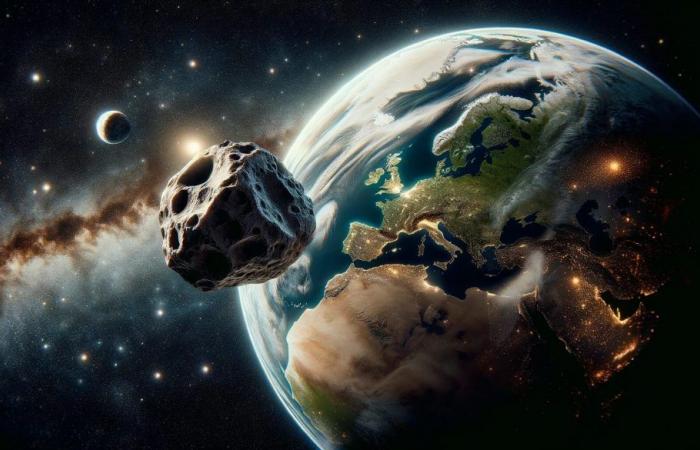And asteroid the size of a skyscraperdiscovered just two weeks ago, will pass between the Terra and the Luna Today, Saturday 29th JuneAt its closest approach, the celestial body will pass approximately 295,000 km from our planet, or about three-quarters of the average distance between the Earth and the Moon.
Today the passage of asteroid 2024 MK
The asteroid, named 2024 MK, has an estimated diameter of approximately 146 meters, higher than the height of a 40-story building or and more imposing than the Great Pyramid of Giza (Cheops, 139 meters high). During its closest approach, it will travel at a speed of approximately 34 thousand km/h, as reported by NASA. South African astronomers discovered the space rock on June 16th.
Although the massive space rock poses no threat to EarthNASA classifies it as “potentially dangerous asteroid” because of his dimensions and his orbitwhich occasionally crosses paths with our planet. Immediately after its “close” flyby of Earth and the Moon this weekend, 2024 MK will head back toward the asteroid belt between Mars and Jupiter and will not return to Earth until 2037, according to NASA’s predictions. Even then, however, will not pose any threat to our planet.
NASA monitors the orbits of more than 35,000 near-Earth objects (NEOs), which are space rocks that come within up to 195 million km of the Sun, often crossing Earth’s orbit during their journeys. Currently, there are no known asteroids that pose a threat to our planet for at least the next 100 years.
Double flyby before Asteroid Day
The flyby of 2024 MK comes just days after an even larger asteroid, called 2011 UL21has passed close to Earth. Measuring between 1.7 and 3.9 km across, the mountain-sized object flew 6.6 million km from Earth, or about 17 times the distance to the Moon. Despite this large distance, 2011 UL21 was the largest asteroid to pass this close to Earth in the last 110 years, according to the Virtual Telescope Project.
These consecutive flybys symbolically precede Asteroid Day, which is celebrated on June 30. This date also marks the anniversary of the Tunguska asteroid impact in 1908, which destroyed approximately 80 million trees in Siberia over an area of 2,150 square km.
Continue reading on MeteoWeb




